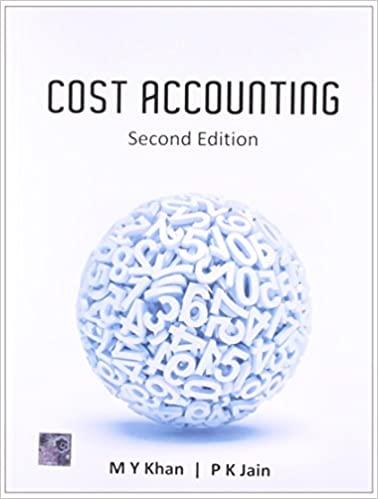Answered step by step
Verified Expert Solution
Question
1 Approved Answer
The business is cyclic, and sales are concentrated during the period leading up to the college football season, which runs between late August and the
The business is cyclic, and sales are concentrated during the period leading up to the college football season, which runs between late August and the end of each year. For the upcoming season, the firm wants to sell sweaters to only a few of the largest schools in the Midwest region of the United States. In particular, they are targeting The Ohio State University OSU the University of Michigan UM Michigan State University MSU Purdue University PU and Indiana University IU These five schools have major football programs and a loyal fan base.
The firm has considered the idea of making the sweaters in their own factory, but for now they purchase them from a supplier in China. The prices are great, but service is a problem since the supplier has a week lead time for each order and the minimum order size is sweaters. The order can consist of a mix of the different logos such as for OSU, for UM for MSU, for PU and for IU Within each logo sub lot, sizes are allocated based on percentages and the supplier suggests percent Xlarge, percent large, percent medium, and percent small based on their historical data.
Once an order is received, a local subcontractor applies the monograms and ships the sweaters to the customer. They store the inventory of sweaters for the company in a small warehouse area located at the subcontractor.
This is the companys second year of operation. Last year they only sold sweaters for three of the schools, OSU, UM and PU They ordered the minimum sweaters and sold all of them, but the experience was painful since they had too many UM sweaters and not enough for OSU fans. Last year they ordered OSU, UM and PU sweaters. Of the sweaters, had to be sold at a steep discount on eBay after the season. They were hoping not to do this again.
For the next year, you have collected some data relevant to the decision. Exhibit shows cost information for the product when purchased from the supplier in China. Here we see that the cost for each sweater, delivered to the warehouse of our monoOur monogramming subcontractor gets $ for each sweater. Shipping cost is paid by the customer when the order is placed.
In addition to the cost data, you also have some demand information, as shown in Exhibit The exact sales numbers for last year are given. The exhibit indicates the retail or full price sales for the sweaters that were sold for $ each. Sweaters that we had at the end of the season were sold through eBay for $ each and were not monogrammed. Keep in mind that the retail sales numbers do not accurately reflect actual demand since they stocked out of the OSU sweaters toward the end of the season.
As for advertising the sweaters for next season, Rhonda is committed to using the same approach used last year. The firm placed ads in the football program sold at each game. These worked very well for reaching those attending the games, but she realized there might be ways to advertise that would open sales to more alumni. She has hired a market research firm to help identify other advertising outlets but has decided to wait at least another year to try something different.
Forecasting demand is a major problem for the company. You have asked Rhonda and Steve to predict what they think sales might be next year. You have also asked the market research firm to apply their forecasting tools. Data on these forecasts are given in Exhibit To generate some statistics you have averaged the forecasts and calculated the standard deviation for each school and in total.
Based on advice from the market research firm, you have decided to use the aggregate demand forecast and standard deviation for the aggregate demand. The aggregate demand was calculated by adding the average forecast for each item. The aggregate standard deviation was calculated by squaring the standard deviation for each item this is the variance summing the variance for each item, and then taking the square root of this sum. This assumes that the demand for each school is independent, meaning that the demand for Ohio State is totally unrelated to the demand at Michigan and the other schools.
You will allocate your aggregate order to the individual schools based on their expected percentage of total demand. You discussed your analysis with Rhonda and Steve and they are OK with your analysis. They would like to see what the order quantities would be if each school was considered individually.
How many sweaters should be ordered this year? Compute your answer for each individual school using two methods: based on overall aggregate demand which is then apportioned to each individual school based on its average forecast, based directly on average forecast for each individual school. Use the singleperiod inventory model approach as the basis for each method. Round your answers to the nearest whole number.

Step by Step Solution
There are 3 Steps involved in it
Step: 1

Get Instant Access to Expert-Tailored Solutions
See step-by-step solutions with expert insights and AI powered tools for academic success
Step: 2

Step: 3

Ace Your Homework with AI
Get the answers you need in no time with our AI-driven, step-by-step assistance
Get Started


